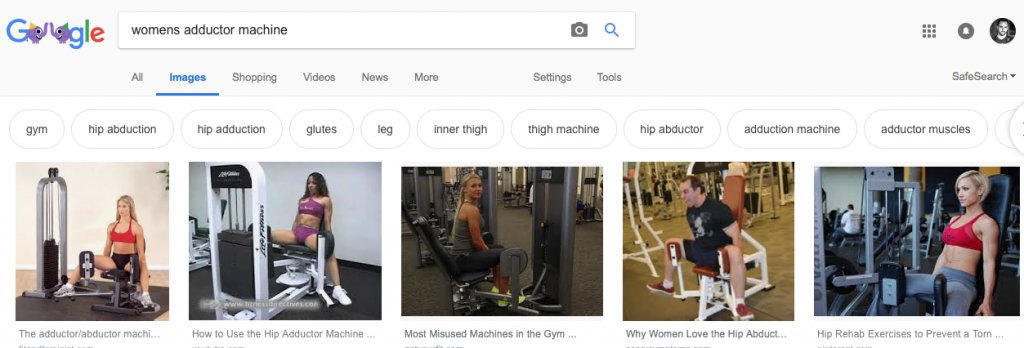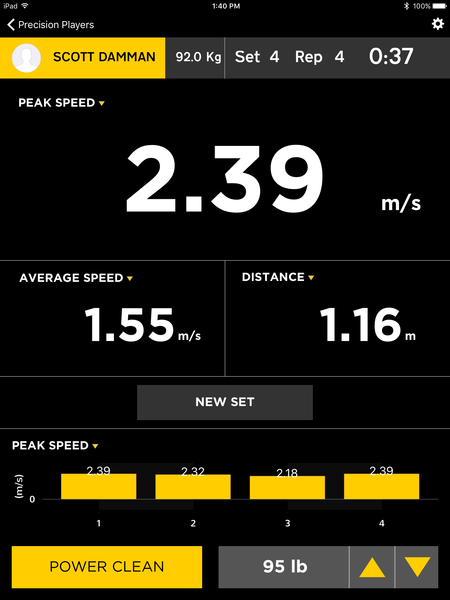Possible Trends for 2019
It’s a new year, which means people are making plans to do big things and lead better lives. In the fitness industry, that means ramping up marketing of every possible workout plan, diet, coaching sale, and whatever else people could do to help capitalize on that fresh motivation to get fit and have fun in the gym.
Just like last year. And the year before that. And the year before that.
Today’s post isn’t going to talk about any of that, but stuff that I think will likely happen across the industry, more so from just observing trends and where things seem to be going versus any bold crystal ball type predictions.

I see gainz in your future.
#1: A Social Media ReBoot
This past year saw a big microscope put on social media sites like Facebook and Twitter in terms of how they protect personal information, privacy, and what kind of content they’ll tolerate versus ban. Additionally, there were some algorithm changes on public and business pages on Facebook that throttled content view unless posts were boosted, making it a less effective method of sharing content than others. Instagram included stories and IGTV in an attempt to suffocate other sites like Snapchat and Youtube, the results of which may be mixed.
The big effect from this is that people are changing how they interact on social media. It’s no longer enough to just share a post or web link on Facebook and expect it to reach a broad audience. People will be changing their social preferences, the sites will change their algorithms, and everyone will be left trying to figure out how to reach their audiences.
Instagram seems to be the preferred medium for a lot of people at the moment, which is great, but if they ever change the algorithm or how they promote or share your content over others, it’s going to have a big effect again, and then it’s on to the next site.
A downside to this is that a lot of the amazing content being shared on social media sites isn’t indexed for search functions, meaning if someone goes on to Google and types in a search, they likely won’t find the specific info a trainer is putting out as they index social posts quite low.
This brings me to point number 2.
#2: A Return To Blogging
Blogs and personal/business websites give a couple of very specific and highly valuable benefits over a social media account:
- Ability to develop an email list – If someone follows you on social media, the odds of them seeing a post you put up is around 3-5%. If someone signs up for your newsletter, the odds of them seeing your email is close to if not 100%.
- You can embed links much easier, and direct traffic away from the posts to other sites with considerably less pushback than from a social network. This makes it easier to produce digital sales, show options for secondary services, and promote similar services to the content you’re producing.
- Indexed content – you can do a Google search on my name and any training topic, and if I’ve written about it, you’ll find a result from it. in fact, if you do an image search for “women’s adductor machine,” yours truly is still ranked in the #4 position 5 years later.

I bet you’re proud of your boy, right mom?
I don’t mean that social sites like Instagram will die away, but I just see more people coming back to a proven platform with a higher rate of engagement from their audiences, plus easier marketability and monetization. It would be very beneficial for any person on a social site dedicated to producing great content, infographics, or video content to also put that content on a blog so it can reap the benefits listed above. It may take an additional 5-10 minutes of work to cross-post, but the payoff would be worth the effort.
#3: A Return to In-Person Coaching
In the past 10 years, there’s been a massive rise in a portion of the fitness industry that didn’t even exist a generation ago: online coaching. This is a great option to give trainers access to a global market versus just relying on a local geography, removes them from potential local economic factors, and makes their “office” fairly borderless.
I’ve used online coaching to work with a broad spectrum of people all over the world, and it definitely gives some economic benefits and freedoms, but also comes with a bit of an undiscussed price.
One of the big benefits of coaching people in person is actually socializing and meeting with people, you know, in person. Not through a computer screen, keyboard, or mouse click. There’s no replacement that you could find in online coaching for a heartfelt high five or hands on real-time coaching, so while online coaching provides some very specific benefits, in person coaching provides others.
I’ve seen a trend where people who had very successful online businesses have started either opening their own gyms, returned to working with real life people more regularly, or are in some way doing more face to face training with clients than previously, and I think that’s something we’ll see more commonly in the coming year.
The development of a hybrid training business is likely to be taking a bigger shift than an either/or concept of in person or online exclusively. More trainers will use in-person with online making up a portion of their revenue. The size of that portion depends on them and their business model, but I see it becoming more prevalent.
This can give some really great benefits as the use of online platforms can benefit in-person clients through access to apps, online resources, etc, and give clients who may not be able to work with someone in-person any more (finances, moving, logistics of work, etc) a chance to continue working with their favourite trainer.
#4: More Celebrity BS, Detoxes, and Unsupported Advice. But With More Scrutiny
Wraps, detoxes, cleanses, and unsupported opinions and sales pitches will continue, because snake oil still sells. The good news is there are way more highly educated people pushing back with a combination of facts and charisma to help make a claim against such things. Fighting the war against pseudoscience takes a blend of Albert Einstein and P.T. Barnum, and there are more of these kinds of people out there than at any other time I can remember, which means the pushback against the charlatans of the world is getting louder, more precise, and with a larger population behind them than at any time before. We’ll see more myths busted, learn more about what works, and push back harder against fear and junk science.
#5: More Technology
This could go with online training, but I’ve also seen a big advance in wearable and performance technology in the past few years. As one example, Velocity Based Training used to be exclusively the domain of high end Tendo units, but more options like PUSH bands and Bar Sensei sensors have made the technology easier to afford, and updated apps have made it considerably easier to include in a trainers programming, even in the average fitness enthusiasts own gym bags.


We’ll see a continued expansion on meaningful devices to measure a bunch of metrics that could be valuable to a training program, which will give a lot more depth to the benefits we see and ways we can manipulate the training variables to help produce a specific result, which is awesome.
I could see the next iteration being involving some form of AI to help guide future programming based on the convergence of these data points. A really heavy workout with some great bar speeds and a solid HRV with sleep score could use AI to help populate the next workout. Changes in body composition could automatically adjust a clients dietary outline, order their meals, and set up delivery. Combining this information with digital optical measurements of blood values to ensure the persons weight loss was as easy as possible, while also being as specifically monitored as possible.
These are just thoughts on possibilities, but hey, if you want to start putting these kinds of things into action, I’ll just take a finders fee of only 3% of gross revenues on any sales these ideas may lead to.